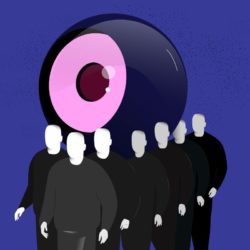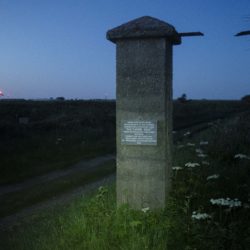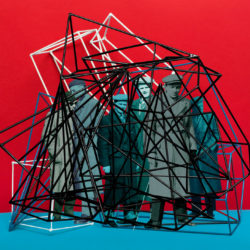
Northern Ireland
24 years after the peace deal that ended the violence of the Troubles, Northern Ireland is still deeply divided along sectarian lines.

Northern Ireland
Today’s conflict isn’t waged with submachine guns. But the lack of accountability has allowed the wounds inflicted by the Troubles to fester.

Northern Ireland
The country’s failure to address its past has left room for permissible lies.

Northern Ireland
Families who lost loved ones during the conflict have pushed for answers for decades. Now, the British government may shatter any hope of justice.

Unsolved murders and unexamined atrocities threaten Northern Ireland’s precarious social peace
- By Caitlin Thompson
- Photography by Lua Ribeira/Magnum Photos
- feature
On January 3 in 1976, two Catholic brothers — John Michael and Brian Reavey — and two Protestant brothers — Reggie and Walter Chapman — were playing pool at a pub in a small town in South Armagh, Northern Ireland.
The men, all in their early 20s, had been friendly for years. They played soccer together. Amicable relationships between Catholics and Protestants had become increasingly rare, even in a small rural town.
The Reavey brothers went by fake names in the soccer league because they also played sports with the Gaelic Athletic Association, an Irish cultural group that prohibited its members from playing non-Gaelic sports until 1971.
The Big Idea: Battling history
Governments rewrite history to further their political goals. School boards insist on rewritten history textbooks to elevate elite groups or privilege favored narratives. But unsavory motives are only one aspect of the rewriting history project. Other impulses are noble, idealistic, and sincere.
All are significant and will impact our politics, international relations, social understandings, economic arrangements. This project will look at specific battles over history — but it’s never really about history.
It’s always a fight over the present.
The Troubles had been raging for several years, and this area, south of Belfast and a short distance from the border with the Republic of Ireland, had been especially hard hit. About 400 people in South Armagh were killed over 30 years — a higher death toll than any other part of Northern Ireland aside from Belfast.
It’s hard to imagine the violence that plagued South Armagh during the sectarian conflict that lasted from the late 1960s until peace was brokered by the Clinton administration in 1998. Northern Ireland is still segregated. Only 7% of children go to schools attended by both Catholics and Protestants. In Belfast, gates in towering walls topped with barbed wire close every evening. The deep wounds left on society by the Troubles still fester, represented by neatly kept memorials on roadsides. If you know where to look, each turn in a narrow country road, each old farmhouse at the top of a rolling hill tells the story of a dark moment in a traumatic history.
On that night in January 1976, the Reavey brothers were having a drink at the local pub when they bumped into the Chapman brothers. At one point, a bomb rolled into the bar, but it failed to go off. So once the police and the army had removed the threat, the men carried on with their game of pool.
Within 48 hours, all four of them were murdered.



The next day, on January 4, John Michael and Brian Reavey were at their farmhouse watching the comedy game show Celebrity Square with their 17-year-old brother, Anthony. A gunman barged through the front door and opened fire. John Michael was nearly cut in two by a spray of bullets from a machine gun. Brian was shot in the back trying to get upstairs to hide. The bullet came out through his heart. Anthony hid under the bed, but the gunman found him and filled his abdomen with 17 bullets.
Somehow, Anthony managed to drag himself up the street to a nearby farmhouse. When the neighbor saw the boy, she called for the ambulance, the police and the priest. Anthony was making a miraculous recovery when he died suddenly 26 days later on January 30 in what the family maintains are suspicious circumstances.
The murder was meticulously planned. Gunmen drove from a farmhouse a mile away. Army checkpoints at both ends of the road ensured nobody saw them coming. After firing off the fatal rounds from a 9 mm Luger pistol, a .455 Webley revolver, a 9 mm Parabellum and a Sterling submachine gun, the gunmen sped away, switching cars, handing off the guns and burning the vehicle they drove to the attack. It took 12 minutes.
“I have done this journey at speed many, many times,” said Eugene Reavey, the older brother of John Michael, Brian and Anthony, as we drove the narrow country roads lined with tall brushes that the gunmen took to carry out the attack. In pursuit of justice for his brothers, Eugene has taken investigators on this route several times in recent years.
The gunmen “traveled these roads with impunity. They were never going to be stopped. Because it's all Protestant country here. So the police would have recognized all these people, and they just waved them on,” Eugene said, pointing across the fields to the road where an officer would have been standing, shining a light to give the gunmen the go-ahead.
Eugene Reavey, who was 28 in 1976, is now in his mid-70s.
He still gets angry when he talks about how a British soldier harassed his grieving mother at a checkpoint on her way home from the hospital. Or how the soldier dumped his brothers’ bloodied clothes on the road.
Mr. and Mrs. Reavey never lived in that house again. Their son who discovered the carnage didn’t speak for a year after the attack. Eugene Reavey has known who killed his brothers for 41 years. A friend of his father’s overheard someone boasting about the murder in a local pub.
Nobody has ever been held accountable. Eugene has dedicated his life to changing that. It has put him on the frontlines in a fight between survivors who want the truth and those who have something to lose from it coming out.
“I want the truth, if I can get it. Then I want justice, but there's no such thing,” said Eugene.

The small community was still reeling from the violence at the Reavey’s when tragedy struck again the next day. On January 5, 1976, Walter and Reggie Chapman were on their way home from work at the Kingsmill plant when their bus stopped suddenly on a secluded country road. Armed men forced the brothers and 10 others off the bus. The gunmen asked if there were any Catholics among them, and as one man went to step forward, the others pulled him back, thinking he was the target. The Catholic man was allowed to walk away. Eleven Protestants, including Walter and Reggie, were shot in their tracks, left to die on the pavement. Only one man survived.
The South Armagh Republican Action Force, found to be a cover name for the Provisional IRA, claimed responsibility for the fatal ambush. Many believed it was retaliation for the murders the day before of the Reavey brothers and members of another Catholic family — the O’Dowds — who lived about half an hour away.
The killings at Kingsmill put the Protestant community on edge. Neighborly tolerance turned to suspicion. The carnage of those 48 hours in the early days of 1976 stained South Armagh for decades.
Everybody in Northern Ireland has their own version of what happened during the Troubles.
The Good Friday Agreement ended the bloodshed. But it did not offer a way to grapple with the history of violence. No one was appointed to look into the killings. The past festered. Later, there were attempts to create a framework to get at the truth of what happened and hold people accountable for their violence. All have failed.
The result is a system where the burden falls on families to push for answers.
Now, even this is under attack. In May, the British government introduced a piece of legislation that would effectively “draw a line under the Troubles,” as outgoing Prime Minister Boris Johnson put it, granting qualified immunity to perpetrators of crimes committed during the conflict. For many, this would slam the door on any hope for justice.

Raymond McCord has come to blows with loyalist paramilitaries quite a few times. More than once it nearly cost him his life.
He grew up in a notorious Protestant neighborhood in North Belfast that is intimidating to walk around to this day. Murals of men with balaclavas and machine guns tower over neatly kept houses. “UDA” is freshly spray-painted in red on a utility box, a reference to the Ulster Defense Association, a loyalist paramilitary. All the lamp posts are painted in the colors of the Union Jack — red, white and blue.
But Raymond has never been one to fall into sectarian divides. When he was a kid, he played soccer on a Catholic team. As the Troubles picked up, Raymond was the last Protestant to stay on it, which counted Bobby Sands, the famous hunger striker, as a player.
Raymond didn’t join the paramilitaries; he confronted them.
Once, the UDA severely beat him and left him to die with cement planks on his limbs. When he got out of the hospital, Raymond, hobbling on crutches with two broken legs, confronted the brigadier of the UDA at his house.
Raymond’s story, however extraordinary for his resistance, is also typical of the Troubles: a parent robbed of their child. His son, Raymond Jr. was found dead in a quarry beaten to death on November 9, 1997, just months before the Good Friday Agreement.
“People say as time goes by…” Raymond trails off. “It doesn’t get any better. It gets worse.”

People were arrested for Raymond Jr.’s murder, but they were quickly released and nobody was ever charged. Raymond has blamed a loyalist paramilitary in the Ulster Volunteer Force who was a police informant for his son’s death, and he accused police of protecting him.
“The only thing the police wanted to do was cover Raymond's murder up,” he said. So Raymond Sr. took the case to the police ombudsman, the watchdog body in charge of investigating allegations of crimes committed by police in the Royal Ulster Constabulary and its successor, the Police Service of Northern Ireland.
After a three and a half year investigation, the police ombudsman determined that Raymond was right: a UVF man who was a police informant was indeed a suspect in his son’s murder, but he was never charged.
“I want to see the people charged. I want to see the policemen charged that covered it up in Raymond’s murder too, who were paying these people that were killing,” Raymond told me.
So he sued the chief of staff of the UVF and the men who killed his son in civil court. Days after he launched his lawsuit, police informed him there was a credible threat on his life. He refused to withdraw it.
Raymond McCord may be one of the last people to be able to file a private lawsuit for a murder that occurred during the Troubles. For many victims and survivors seeking truth, justice or accountability, the U.K. is about to pull the rug from underneath them.

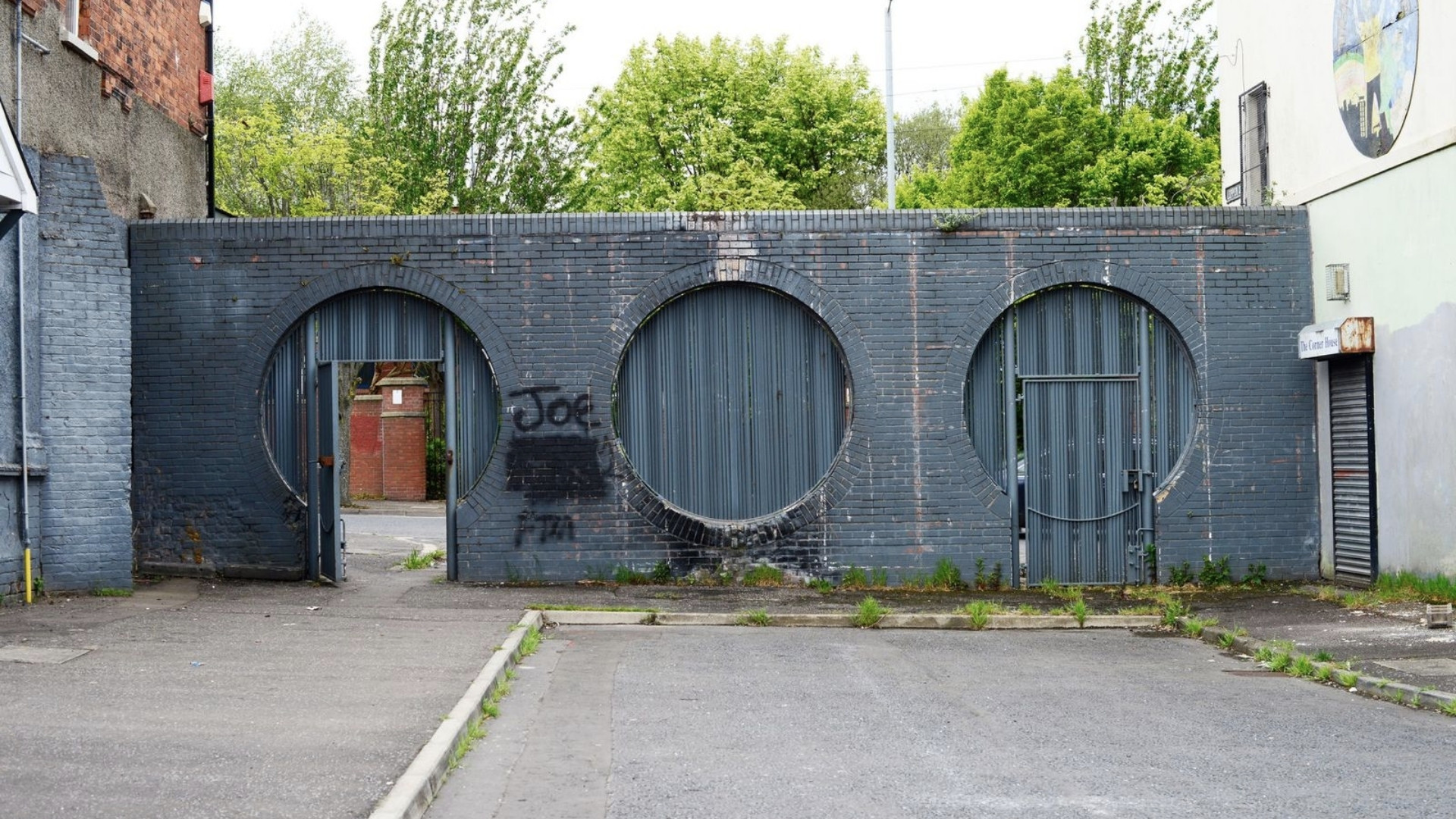



The divide feels particularly vast this year. In elections in May, Sinn Fein, the republican party that was the political wing of the IRA during the conflict, won the most seats in the Northern Ireland Assembly for the first time in history. The prospect of a united Ireland seems closer than ever, something unionists are dead set against.
It is in this context that the U.K. government came up with a plan to close the book on the Troubles. Almost nobody in Northern Ireland — Catholic and Protestant — supports it. Instead of burying the conflict in the past, it’s bringing the anger to the surface.
In July 2021, the British government released the outline for the bill to deal with the legacy of the Troubles which included an amnesty for crimes committed during the conflict. The uproar was immediate and came from all sides. All five major political parties in Northern Ireland came out against it.
The opposition to this bill has become a rare unifying force for groups who still hold a grudge against each other. But there’s perhaps nobody who despises this legislation more than Raymond McCord.
He was already two decades into fighting to bring his son’s killers to court when he heard the news last summer about the U.K. government’s amnesty proposal. He rang a friend whose father was killed in 1992. The two headed to London to protest at Downing Street. Then he gathered nine other victims to form the Truth and Justice Movement. They started calling politicians.
Just a month after the U.K. announced its plans, the group sat down in the Belfast City Hall across the table with politicians from every major political party in Northern Ireland and in Ireland. Raymond circulated a document pledging to reject the U.K.’s amnesty proposal. Every politician signed it. They did the same thing at Westminster. Every political party except the Tories promised to oppose the legislation.
Related articles: Battling History
A revised version of the bill was introduced, and it includes substantial changes from the original proposal. Instead of a blanket amnesty, there will be a qualified immunity. The door remains open to prosecution of anyone who does not cooperate with an investigation. The bill creates a commission which will have the power to compel witnesses. There’s also an oral history project that “will allow people to tell their stories and share their experiences.”
Under the new proposed legislation, inquests that have reached a certain point will carry on, and civil action filed before the introduction of the law, like Raymond McCord’s case against paramilitaries in the Ulster Volunteer Force, will be allowed to continue. But other families won’t be able to file new civil lawsuits.
The bill is trying to walk a thin line between aging veterans of the security forces living in fear that they will be the next target of a spurious investigation and the families of victims long denied justice. But to Raymond McCord, the changes don’t make much of a difference. He’s planning to file a legal challenge if the bill does become law.
Francie McGuigan was the first person to break out of Long Kesh, the notorious prison where suspected paramilitaries, the vast majority of whom were Catholic or republican, were held without trial as political prisoners during internment from August 1971 to December 1975.
He escaped dressed as a priest with an unsuspecting soldier in the passenger's seat. Francie was driving someone else’s car that he didn’t know how to put in reverse, so he had to ask the soldier to back it up for him as they pulled out of the prison.
Francie grew up in a prominent republican family in Ardoyne, a Catholic working class neighborhood in North Belfast. Nearly every member of his immediate family was interned at one point or another. Francie himself was in the IRA.
In 1971, Francie was sent to prison where he and 13 other men were subjected to “interrogation in depth.” Later, it would be called torture. The 14 prisoners became known as the Hooded Men.
The men were forced to hold stress positions, a hood over their heads, their legs spread apart, fingertips touching the wall supporting their body weight until they collapsed. They were deprived of sleep, food and water. They were taken up in helicopters, told they were hundreds of feet in the air, then pushed out the door, only to learn they weren’t far off the ground.

“There's no way they let me out of here alive because they're not going to let me tell the world what they've done,” Francie thought at the time.
It was during one of the numerous interrogations that he realized the toll the experience was taking on him. The interrogator asked him to spell his name. He couldn’t spell McGuigan.
The torture lasted seven days. Eventually, the Hooded Men were transported to the jail with other interned prisoners where they wrote down their stories. Francie didn’t think it would make a difference.
“We had no faith or nothing in British justice. We didn't believe in it, and we didn't believe it existed. We've since proved that we were right,” Francie said.
The Irish government filed a case against the U.K. at the European Court of Human Rights in Strasburg. There were signs the British would be condemned on an international stage for their treatment of the Hooded Men. The European Commission, the executive body of the European Union, issued a report accusing the U.K. of torture.
But optimism that there would be accountability was shattered when in 1978 the European Court of Human Rights did not rule that the Hooded Men had been tortured. Instead, the court called the interrogation tactics “inhuman and degrading treatment.”
The United Kingdom was able to wipe its hands of the accusation that officers tortured political prisoners on its own soil.
When a RTÉ Investigates documentary in 2014 showed new evidence of torture that had not been presented before the European Court of Human Rights, Francie joined forces with the daughter of Seán McKenna, one of the other Hooded Men who was so severely affected that he lived out the rest of his days in a psychiatric hospital before he died in 1975.
They went to court to ask a judge to decide if the police should have investigated allegations of torture by British security forces. After years of appeals all the way up through the highest levels of the U.K.’s legal system, they were vindicated.
On December 15, 2021, the Supreme Court ruled that the tactics used against the Hooded Men were “deplorable” and had they happened today, it likely would be considered torture. The court ordered an investigation into the allegations of torture, but crucially, one that was not conducted by Northern Ireland's police force. The judge in the case did not have faith the police force could be impartial.
When I met Francie in the spring of 2022, the Hooded Men were still in limbo. An investigation hasn’t been opened. The future of that investigation is now even more uncertain.
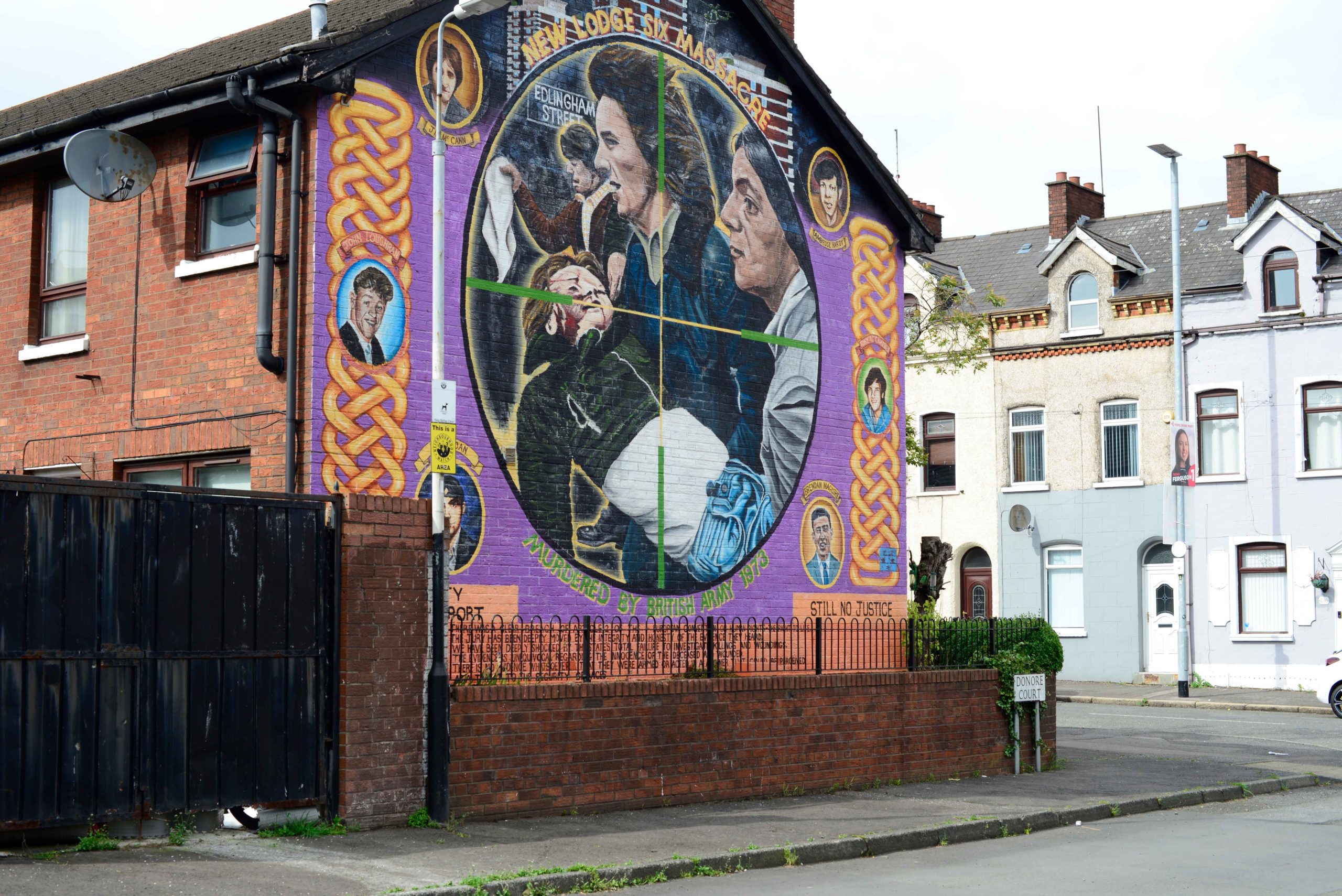


For days after the murder of his brothers, Eugene Reavey waited for the police to come talk to the family, but nobody did.
“I was expecting something. We got nothing,” he told me.
Decades went by, and the Reavey family tried their best to heal. Along the way, a picture started to form of a secretive murder squad in South Armagh operating in the 1970s. International investigators started to look into evidence that security forces in the army and police had colluded with loyalist paramilitaries. Known as the Glenanne Gang, they were responsible for more than 120 murders.
An investigation into the Glenanne Gang in the mid-2000s was never completed. Efforts to give victims’ families answers were stalled until, in 2019, a court in Belfast ruled there should be a full report on how the gang operated.
The road to accountability for crimes committed during the Troubles is long, complicated and often stymied by people who have something to lose from the truth coming out.
For Francie McGuigan and Eugene Reavey, the only way to get closer to that truth has been through the courts, relying on judges to order transparency and accountability that otherwise rarely exists.
There’s a view that “litigation and courts are used as a solution to the problem. And the reality is they’re not. They’re far from a solution, but they are the only solution at the moment,” said Darragh Mackin, a human rights lawyer in Belfast who represents both the Hooded Men and the families of the Glenanne Gang victims.
After the court ruling, the task of investigating alleged collusion by the Glenanne Gang fell to career detective and anti-terrorism expert Jon Boutcher. His team has taken on some of the most politically contentious cases from the conflict, and it has become the gold standard for inquiries into Troubles-era crimes.
“Somebody told me you’re rewriting history,” Boutcher said. “Actually, nobody knows what happened in Northern Ireland because it’s kept behind this curtain of secrecy. I’m setting out what happened.”
For many, Jon Boutcher feels like their last chance to correct the record on what happened to their loved ones. But the future of Operation Kenova may be short-lived. Under the proposed federal legislation, criminal investigations related to the Troubles can only be carried out by a newly created reconciliation commission; its leadership will be appointed by the U.K.’s top official in Northern Ireland. The work of Operation Kenova would cease. It’s not clear yet whether the new investigative body would take on the Glenanne Gang case.
The door that people like Eugene Reavey fought so hard to open could be slammed shut.

The torture of the Hooded Men and the murder of the Reavey brothers get at one of the most contentious features of the bloody conflict: the role security forces played during the Troubles. Were the army and police keeping the peace, protecting society from terrorists? Or were they active participants? Was it just a few bad apples? Was there a system of impunity or are veterans now the target of a witch hunt?
Tensions have far from disappeared. People on different sides seem to be living in completely different realities, convinced to their core that they are in the right and the other side is evil.
The pervasive narrative throughout the Troubles and into the present is that republican paramilitaries were responsible for the vast majority of violence. You hear the same numbers repeated: 60% of killings were committed by republican paramilitaries, 30% by loyalists and 10% by state security forces. Over half of the people killed were civilians. More than 250 were children under the age of 18.
Brandon Lewis, who was the U.K.’s top official in Northern Ireland until his resignation in July, has doubled down on this, claiming that “the vast majority of those state-related killings were lawful.”
The breakdown has significant political weight. It has been used to undermine the argument that the British fought a dirty war in Northern Ireland and to bolster the narrative that investigations into state killings are rewriting history in favor of republican paramilitaries by creating the illusion that security officers in uniform were responsible for violent acts to the same degree as groups like the IRA.

Being a policeman or a soldier in Northern Ireland was a dangerous job. I spoke with veterans who were blown up in car bombs and lost limbs or were ambushed and shot, narrowly escaping with their lives. I met one man now in his 80s who drove a school bus and served part-time in the Ulster Defense Regiment, which was part of the British army. He had to be followed by a police car on his bus route because of threats on his life. One day, a bomb under his seat went off. He and the students all survived, but his son later committed suicide due to the trauma.
In all, 1,441 members of the British armed forces, including 197 serving UDR soldiers, were killed during Operation Banner, the deployment that lasted from 1969 to 2007. Another 319 members of the RUC were also killed. Many still live with the scars, either physical or psychological.
But there is a growing body of evidence that there was collusion between security forces and loyalist paramilitaries. Since the Good Friday Agreement, the police ombudsman, the watchdog body tasked with investigating police killings, has found that RUC officers protected members of loyalist paramilitaries and turned a blind eye as those groups armed themselves with weapons later used in sectarian killings.
In 2001, the RUC was dissolved and replaced with the Police Service of Northern Ireland. Many of the former officers or soldiers I spoke to see the investigations into members of security forces as a witch hunt coming decades after they risked their lives to keep the peace.
“All the legacy structures are either being designed or are being subverted for the purpose of introducing a false narrative to demonize the police and the security structures and the work that they did,” said Chris Albiston, a former chief constable of the Ulster police.
Albiston is particularly enraged by allegations of widespread collusion between the RUC and loyalist paramilitaries. Together with his colleagues at the Northern Ireland Retired Police Association, a welfare and lobbying group for former officers, they are using the courts to curtail the power of the ombudsman to release reports concluding collusion occurred.
The police didn’t talk to any witnesses of Paul Whitter’s murder. On April 15, 1981, the 15-year-old boy was walking past a bakery when he was shot in the head by a plastic bullet fired out the window of a tank by the Ulster police in the city that most Protestants call Londonderry and Catholics call Derry. He died 10 days later.
I met his mother, Helen Whitters, exactly 41 years later, around the corner from where he was shot.
“I’ve never spoken to an RUC man. They have never spoken to me, ever, ever, ever,” she said of the government police.
Only once did an officer come to the Whitters’ house.
"They had a black bag with Paul’s clothes, bloodied clothes, and they handed them in and that was it. That was it. Nothing. To this day,” Mrs. Whitters told me.
Subscribe to our Authoritarian Tech newsletter
From biometrics to surveillance — when people in power abuse technology, the rest of us suffer. Written by Ellery Biddle.
Paul Whitter’s family is still waiting for answers. The records on his death were sealed until 2059. When the family tried to request them, they were sealed for an additional three decades. The British government released partial files on Paul Whitters’ murder in June, but the rest remain sealed until 2084 — over 100 years after Paul died. Everyone who knew the boy will be gone before the information his mother wants becomes public.
People who are opposed to investigations into crimes that happened during the Troubles sometimes accuse victims of trying to rewrite history. But for decades, the truth was unattainable for many families. Large parts of history were never written.
During the Troubles, there was a system in place to ensure killings by security forces were not investigated. Crimes committed by the army were not handled by the police. Instead the Royal Military Police did an internal review.
Investigations into atrocities committed by paramilitaries were dangerous and difficult. Violent groups were adept at picking up shells and covering their tracks. Authorities risked their lives to go through paramilitary-controlled neighborhoods to examine the scene.
Overall, the rate of investigations and prosecutions during the conflict was dismally low. Only four soldiers were convicted during the Troubles. Even now, only six have been charged.
Investigations that did occur were often heavily flawed. Take, for example, the Widgery Report into Bloody Sunday when British paratroopers opened fire on civil rights marchers in Derry on January 30, 1972. Conducted in the immediate aftermath, the report found that soldiers were fired upon first. This was later proven to be false by a public inquiry released in 2010 that took 12 years to complete and cost £195 million, roughly $280 million.
Things only started to change in 2010 when Northern Ireland began to build a judicial system that was not governed by the British one. As Northern Ireland’s first director of public prosecutions that was truly independent from England, Barra McGrory has had a front seat to the decades-delayed effort to write those chapters into history books.
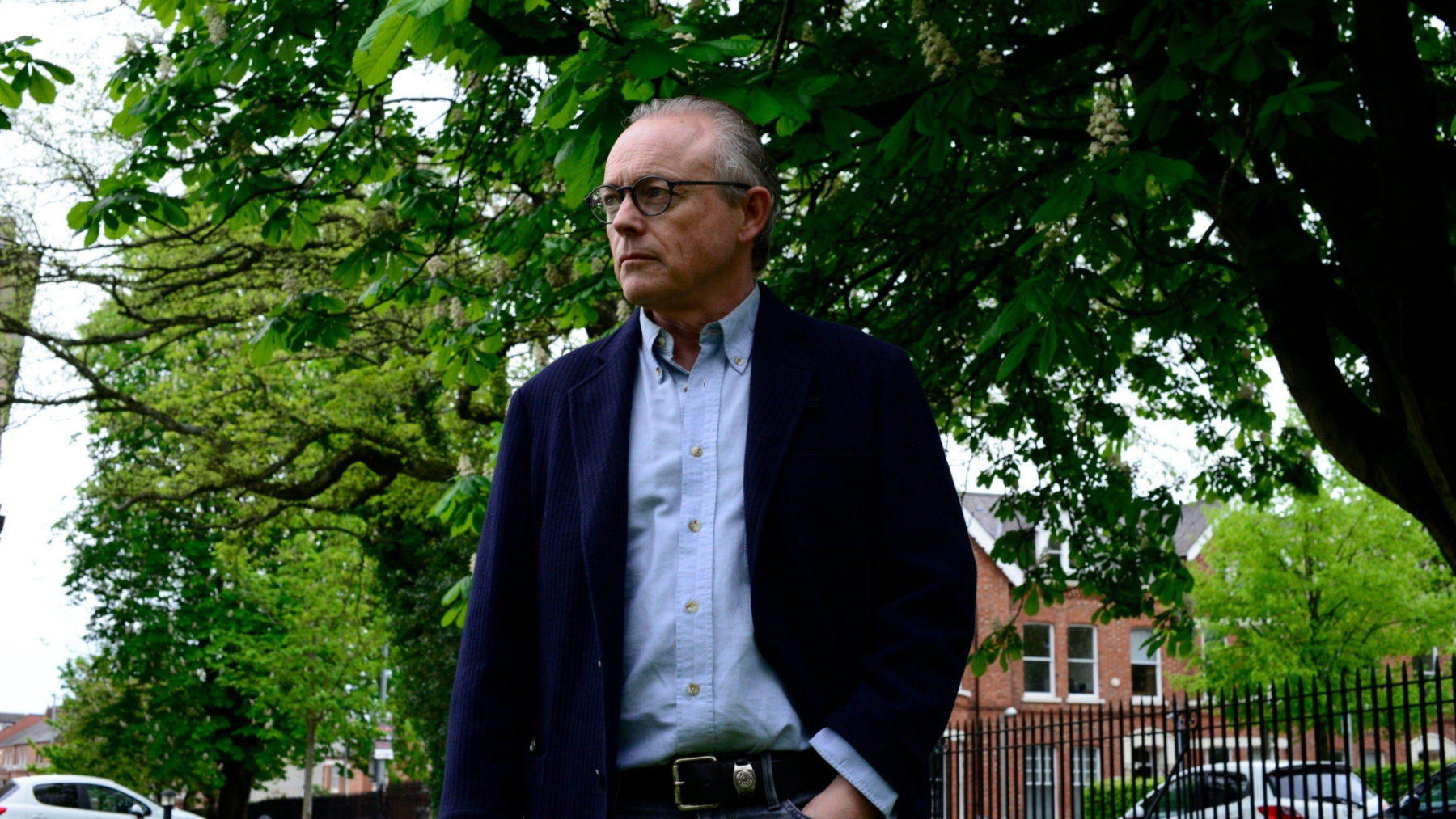
“Specifically these British army shootings were never really scrutinized. The odd one was. But by and large, they were never properly investigated. And then all of a sudden, there was a focus on them. And files started to come in,” McGrory said.
Still, the system was overly complex and under-resourced. At the current rate, it will take investigators 20 years to get through the cases in the queue.
For some, transparency would go a long way. As Paul Whitter’s mother told me, “a wee bit of honesty on their part would help, wouldn’t it.”
Eugene Reavey was on his way to the hospital to pick up the bodies of his brothers, John Michael and Brian, on January 5, 1976, the day after their murder at the family’s home.
“And I was coming up that hill. There was a fellow waving his arms frantically,” Eugene told me as we retraced his steps one morning this May.
“I put the window down and he says, ‘Come on up here, quick. There's been an awful slaughter.’”
Eugene got out of his car and started walking up the hill when he saw it. At first, he thought there had been an accident and a neighbor’s cows were lying on the street. “There was steam rising out of these bodies, you know,” he said. “It was raining.”
It’s as if Eugene can see the bloodied street in his mind’s eye as he described “the smell of death” to me. “It haunts me to this day. And such carnage.”
Almost immediately, the accusations started flying. None of the Reaveys were involved in any paramilitary. But police told people the IRA shot the Reavey brothers because they wouldn’t go along with a plot to kill security forces. Or that Eugene was responsible for the murders at Kingsmill.
“It was the next morning. ‘Eugene Reavey was in the IRA.’ Eugene Reavey was never in the IRA in his fucking life. Or had anything to do with them. And that’s the sort of shit and nonsense that they were coming out with. So we had to put up with that every time they stopped us at a checkpoint,” Eugene told me over breakfast, sipping the second cup of coffee that had gone cold as we talked.
Northern Ireland’s failure to address its contested history has left room for what some historians call permissible lies. In the absence of truth, people fill in their own narratives.
For Eugene, things got worse. For four days after his brothers’ death, police stopped him driving to work, pulled him out of his car and down into a field where they held him on his knees in the river at gunpoint.
“And the water was up to there,” he said, pointing to his chin. “And the big guy takes out a gun and puts it to my head and he says, ‘Who shot the people at Kingsmill?’ I say, ‘I don’t fucking know, you needn’t be asking me.’ ‘Who shot the people at Kingsmill?’ And that went on five times.”
The rumor that Eugene Reavey was responsible for the Kingsmill killings in which his murdered brothers’ friends, the Protestant brothers Walter and Reggie Chapman perished, persisted for decades.
Twenty-five years later, he was driving home from work when he heard on the radio that Ian Paisley, leader of the Democratic Unionist Party, the Protestant political party, was going to reveal the killers at Kingsmill on the floor of the House of Commons. Eugene didn’t think much of it until he learned that Paisley had named him as the mastermind of the attack.
“I nearly died. And my wife, god help her, she was nuts.”
Eugene spent years trying to clear his name. It was later proved, after a lengthy legal battle and an investigation by the Historical Equires Team at the Police Service of Northern Ireland, that Eugene Reavey had nothing to do with the murders at Kingsmill.
But the damage had been done.
“People I had known for years just turned their back, walked away. Neighbors wouldn't speak to me,” Eugene said.
“Because no matter where you went. See that man, that's the man that shot the people at Kingsmill. That went on for years and years and years.”
The area along the Shankill Road in North Belfast, just a few blocks from a peace wall gate that closes at 6pm, is unmistakably Protestant. You don’t have to look hard before you spot the red hand of Ulster, red poppies, the Union Jack.

On one corner, behind a black metal gate, there’s a memorial that has a very different tone from the others that dot the city. It’s not about tradition, history or the bravery of those who fought on one side or another. It’s just angry.
On the walls, there are photos of young children with the captions like “murdered by Sinn Fein/IRA for being Protestant,” or “Sinn Fein/IRA’s slaughter of the innocents.”
Violent images of carnage caused by bombings are intermixed with photos of IRA members who are now in government. I can’t pull my eyes away from one block of photos of terror attacks in Paris in November 2015 and an IRA bombing in London: “IRA — Sinn Fein — ISIS no difference,” reads the caption.
The monument is graphic, inflammatory. But it’s only one symbol of the embers of the Troubles that are still burning today.
In Derry, there are indications of the same anger coming from the opposite side. In one mural, two men wearing balaclavas point machine guns. If you stand directly in front of the wall, one of the guns is pointed straight at you. “Unfinished revolution” is written across the top in block letters. Around the city, there are symbols of modern-day paramilitaries, like a sign for the fringe republican group Saoradh with the slogan “salute the men and women of violence.”
These memorials represent the margins. The vast majority in Northern Ireland support the Good Friday Agreement and do not want a return to violence. But these symbols contribute to an ever present uneasiness in the air, a fear that peace is tenuous.
Failing to grapple with the past has kept this anger alive.
“It's still raw. Every fifth person you stop on that road will know somebody who died, possibly a relative. And that still hurts people,” said Danny Morrison, a former republican political prisoner and former Sinn Fein director of publicity.
“We are, in a sense, captives of the dead.”
The story you just read is a small piece of a complex and an ever-changing storyline that Coda covers relentlessly and with singular focus. But we can’t do it without your help. Show your support for journalism that stays on the story by becoming a member today. Coda Story is a 501(c)3 U.S. non-profit. Your contribution to Coda Story is tax deductible.
